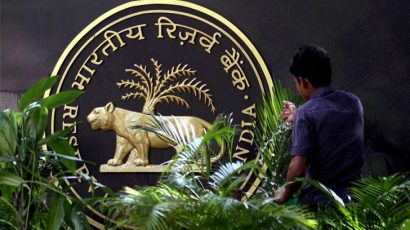PM Modi launches Vehicle Scrappage Policy

India has launched the Vehicle Scrappage Policy aiming to reduce the number of unfit and polluting vehicles,stimulate economic growth and job creation.
Prime Minister Narendra Modi as launching the initiative said “The launch of Vehicle Scrappage Policy today is a significant milestone in India’s development journey. Vehicle scrapping will help phase out unfit and polluting vehicles in an environment-friendly manner. Our aim is to create a viable circular economy and bring value for all stakeholders while being environmentally responsible.”
It was while addressing the Gujrat Investor Summit on Friday that PM Modi inaugurated Vehicle scrappage policy.
WHAT IS THE VEHICLE SCRAPPAGE POLICY?
According to India brand equity foundation , a Trust established by the Department of Commerce, Ministry of Commerce and Industry, Government of India website, the vehicle scrappage policy is a government-funded programme to replace old vehicles from Indian roads. The policy is expected to reduce pollution, create job opportunities and boost demand for new vehicles.
According to the website, commercial vehicles of >15 years and passenger vehicles of >20 years will have to be mandatorily scrapped if they do not pass the fitness and emission tests. The idea is to phase out cars and CVs older than 15-20 years to slash urban pollution levels and stimulate automotive sales, which continue to suffer during India’s post-COVID recovery phase. Additionally, the vehicle scrappage policy is also said to be a part of a stimulus package majorly requested by the original equipment manufacturers (OEMs) to infuse their demand.
Proposed Incentives, Disincentives and Exemptions
Incentives for scrapping old vehicles and buying new ones:
- Vehicle manufacturers can give up to 5% discount for buying new vehicles
- Zero new registration fee
- Scrap value equivalent of 4-6% of ex-showroom price of new vehicles
- States can give up to 25% and 15% rebate on road tax for personal and commercial vehicles, respectively
- Reduced maintenance cost and increased savings from fuel
Disincentives for keeping old vehicles:
- States can levy an additional ‘Green Tax’
- Hike in renewal of registration fee for private vehicles
- Increase in renewal of fitness certification for commercial vehicles
- Automatic deregistration of unfit vehicles
Vehicles to be exempted:
- Strong hybrids and electric vehicles
- Vehicles using alternative fuels such as CNG, ethanol and LPG
- Farm and agricultural equipment such as tractors, tillers and harvesters
Tentative Timeline and Expected Benefits
The appointments will be generated online for which the Ministry of Road Transport and Highways (MORTH) has not specified any time, but the following tentative timelines:
- October 1, 2021: Rules for fitness scrapping centres will be released
- April 1, 2022: Fitness testing for government and public-sector undertaking (PSU) vehicles
- April 1, 2023: Fitness testing for heavy commercial vehicles
- June 1, 2024: Fitness test rules to be rolled out for other categories
According to MORTH, the policy will likely result in the following projected gains:
- 30% boost for the Indian automobile industry from the current Rs. 4.5 lakh crore turnover to Rs. 10 lakh crore over the coming years
- The export component of Rs. 1.45 lakh crore of the present turnover is likely to go up to Rs. 3 lakh crore
- Availability of scrapped materials such as steel, plastic, rubber and aluminium will increase. This will be used in manufacturing automobile parts, which will reduce cost by 30-40%
- Promote new technologies with better mileage of vehicles besides promoting green fuel and electricity
- Decrease India’s huge Rs. 10 lakh crore crude import bill
- Attract new investments of ~Rs. 10,000 crore and create as many as 35,000 jobs
There are ~17 lakh medium and heavy commercial vehicles (M&HCVs) that are older than 15 years without any valid fitness certificate, 51 lakh light motor vehicles (LMVs) older than 20 years and 34 lakh light motor vehicles (LMVs) older than 15 years. Also, the average age of commercial vehicles is over 10 years and the private vehicles is 10-15 years. Therefore, the proposed policy is also likely to boost sales of heavy and medium commercial vehicles that had been in the contraction zone since 2018.















